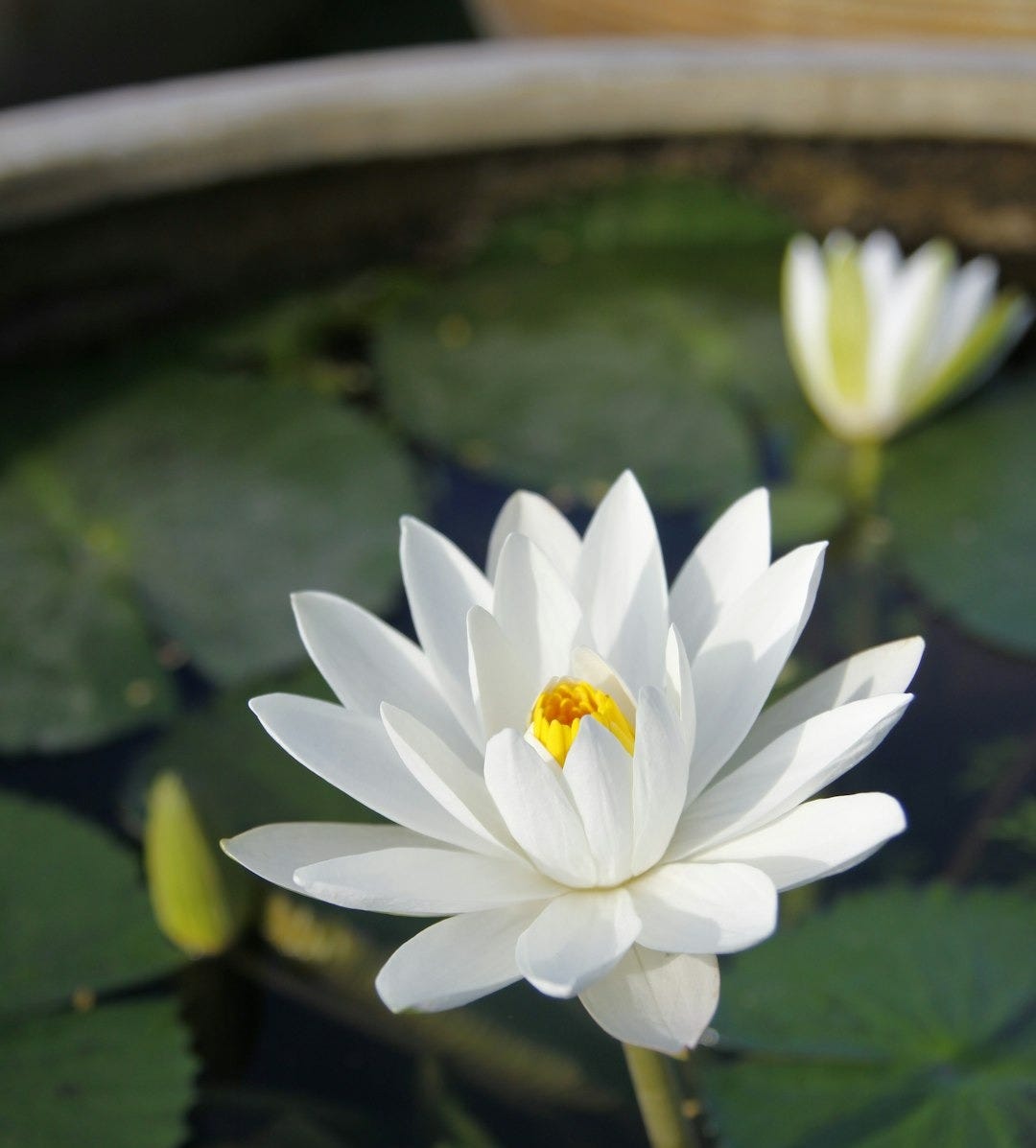May’s Special Days: A Potpourri of Celebrations
Herb of the Year for 2025. Chamomile (Matricaria chamomilla). Selected by the International Herb Association
Flower of the Month for May: Lily of the Valley
May is National Salad Month. Of course. What else? And the first week in May has been National Herb Week since 1991— celebrating the plants that have contributed so much to human lives.
Week 1
May 5. Today is Cinco de Mayo, a festival honoring Mexican-American culture.
May 5. Kodomo no Hi (Children’s Day), Japan, celebrated with kashiwa mochi, a sweet rice cake stuffed with red bean paste and wrapped in an oak leaf, symbolizing family continuity and prosperity.
May 6. May cheeses were traditionally made at this time. A favorite spring/summer cheese: Nettle Cheese, wrapped in fresh nettle leaves for ripening or flavored with chopped nettle.
Week 2
May 11. Mother’s Day. Give your mom a hug. If you're not with her, virtual hugs are sweet. So are flowers. (Just sayin'.)
May 12. Vesak (Buddha Day), celebrated in Asia as the Buddha’s birth, enlightenment, and death day. Featured: vegetarian feasts, lotus flowers, lotus lanterns.
May 13. At the 1876 Philadelphia Centennial Exhibition, sassafras-flavored Hires Root Beer was introduced to a thirsty nation.
May 14. About this time, England celebrates Be Nice to Nettles Week, introducing modern folk to a plant they usually meet—unpleasantly—only on picnics.
Week 3
May 19. Victoria Day. First designated when Victoria was queen, it celebrates the Sovereign’s birthday and the beginning of summer, when Canadian gardeners raise their trowels and reclaim their flowerbeds. (Land grabs? Not here, thank you. We’re sticking to native perennials and well-behaved borders.) And of course, it’s the perfect excuse for a Victoria Sponge. (Recipe link below.)
May 22. This week in 1810, Dolley Madison is said to have served the first ice cream at the White House. Alas, not true: Thomas Jefferson beat her to it. For the real scoop, check out this post.
May 23. The birthday of Carl Linnaeus (1707). A Swedish botanist, Linnaeus figured out how to keep plants straight with his binomial naming system. But some scientists say it’s time to return to plant names that reflect the knowledge of indigenous people.
Week 4
May 26. Memorial Day (called Decoration Day when it was first marked in 1868) is observed on the last Monday in May. Remembrance is symbolized by the red poppy.
May 27. The birthday of Rachel Carson (1907), writer, ecologist, and marine biologist. Her courageous 1962 book Silent Spring alerted the world to the dangers of pesticide poisoning.

Sassafras: The Universal Plant
“But the most common and wonderful plant . . . is that which we call the ‘Universal Plant,’ because its leaves when powdered heal wounds of all kinds in a short time.”—Jesuit priest living with the Onondaga, ca. 1700
When I was a kid in 1950s Illinois, my brother and I used to pedal our bikes to the one-pump Phillips 66 station on the Dixie Highway, where ten cents bought a frosty bottle of Dad’s Root Beer—still made back then with real sassafras. The flavor came from safrole, an aromatic oil distilled from the tree’s bark and twigs. In 1960, the FDA pulled the plug on safrole (too much of it is toxic), and the taste of root beer hasn’t been the same since.
But the FDA couldn’t scare my Missouri grandmother. Her favorite afternoon pick-me-up was sassafras tea, brewed from a tree at the edge of the woods. Later, living in Louisiana, I learned that Creole gumbo just isn’t gumbo without filé powder—ground from dried sassafras leaves. And more recently, I saw a gorgeous yellow-brown fabric dyed from sassafras bark. That Jesuit priest wasn’t kidding when he called it the “Universal Plant.”
The Choctaw name for sassafras is kvfi; in Delaware and Virginia, it was called winauk. Many Native American tribes made wound poultices from the leaves and brewed the bark for fevers, urinary ailments, and even acne. Sassafras was one of the New World’s earliest cash crops. In 1600s Europe, its medicinal roots and bark were all the rage—more prized than chocolate and tobacco. That ended abruptly when word got out that it was used to treat syphilis. (Awkward. Sales fell off a cliff.)
Safrole—sassafras’s aromatic signature—is mildly hallucinogenic in high doses, and potentially carcinogenic, hence its ban in food production. Modern root beer relies on artificial flavors, and sassafras tea drinkers are now warned to sip in moderation. But there’s good news: the leaves are considered safe in small quantities, especially as a seasoning. Filé powder is still widely available, or you can make your own by drying young leaves until crisp and grinding them fine.
To thicken and flavor gumbo, stir filé powder into the pot after it comes off the heat, and only into the portion you plan to serve. (It turns stringy when reheated. Just ask any Cajun cook.) Want more? Here’s a link to filé lore and a mouth-watering recipe or two.
And a poem that makes me smile, especially the last seven lines. And really, you must read it aloud.
Spring Ode
Fill me with sassafras, nurse
And juniper juice!
Let me see if I’m still any use!
For I want to be young and to sing again,
Sing again, sing again . . .
Fill me with sassafras!
I want to be one
With the joy of the earth, under the sun,
For the purple convolvulus convolves and volutes
And the arbutus ups and arbutes—
Fill me with sassafras,
And cohosh and buchu and juniper juice
And then turn me loose!
—Don Marquis
p. 53, The Poetry Cure (1946)
May’s To-Do List
Fiesta time! Celebrate Cinco de Mayo with a traditional mole poblano. (The word mole comes from the Náhuatl molli, sauce or mixture.) Here's the whole story and an authentic recipe. If you're short on time and patience, here's a recipe that's simple (relatively!) and very tasty.
Dad’s doesn’t share its original root beer recipe. But this one from Wellness Mama is likely to be similar. The recipe also includes directions for homemade ginger bug starter (you won’t want to miss that) and a wry comment on safrole’s toxicity. We wonder: Did the FDA go too far in 1960? If so, why?

The lotus flower, sacred in many Asian cultures, rises pure and fragrant from muddy waters—a symbol of spiritual awakening and resilience. But lotus isn’t just symbolic: the seeds are eaten toasted or boiled, the roots sliced into crisp stir-fries, and the leaves used to wrap sticky rice, then steamed. Lotus is also a striking addition to water gardens (to Zone 4a). Hardy and tropical varieties are available at nurseries or online, ready to thrive in large pots, barrels, or backyard ponds. Beauty, flavor, and symbolic meaning—one plant, many petals.
Celebrate Victoria Day (and Canada’s continued independence!) with a classic Victoria Sponge. Here’s a recipe. (And a recipe for self-rising flour, in case you’ve just run out.) To think that Victoria might not have had her favorite cake if Alfred Bird’s wife hadn’t been allergic to both eggs and yeast—so he had to invent baking powder. Needs must.
Celebrate Be Nice to Nettles Week by listening to Susan's podcast on this much-maligned "weed" or reading about 101 surprising ways you can use nettles.
Learn more about Rachel Carson’s life and work from the website of Linda Lear, Carson’s acclaimed biographer. Lear has also written the highly-praised biography, Beatrix Potter: A Life in Nature. Dual portraits of a pair of outstanding women whose environmental vision changed the way we view the world.
One way to open your eyes is to ask yourself, what if I had never seen this before? What if I knew I would never see it again?—Rachel Carson
Well, that was fun. I hope you enjoyed this May issue All About Thyme as much as I did. A reminder: we’re taking a month’s break from Guerrilla Reads—back in June with Collision of Power (Martin Barron).
I’ll be here again next Monday, with May’s LifeScapes and the following week with the Gemini issue of Growing Green with the Zodiac. Coming in June, the first episode of the serial publication of the first book in the China Bayles series! China and I are working on it now.
Thank you for reading—comments on this post are open to everyone. I’d love to hear from you!









I drank sassafras tea in my late 20s. I can't remember where I bought it. Then someone ruined my experience by telling me that the tea was toxic and that I shouldn't drink it.
I could use a sassafras balm to heal some wounds. Don't you find it strange that herbs used by Indigenous people and others for probably centuries becomes suddenly harmful, yet modern pharma is sometimes deadly?
From teach011 via email: I love sassafras. We had a tree in my school yard when I lived in Pennsylvania. My aunt sent me a jar filled with it years ago. I keep it in a cupboard on the top shelf with all the serving dishes. When I get up there to take down a dish, I open it for a quick whiff. Still smells so good! Wish it was still used in root beer.